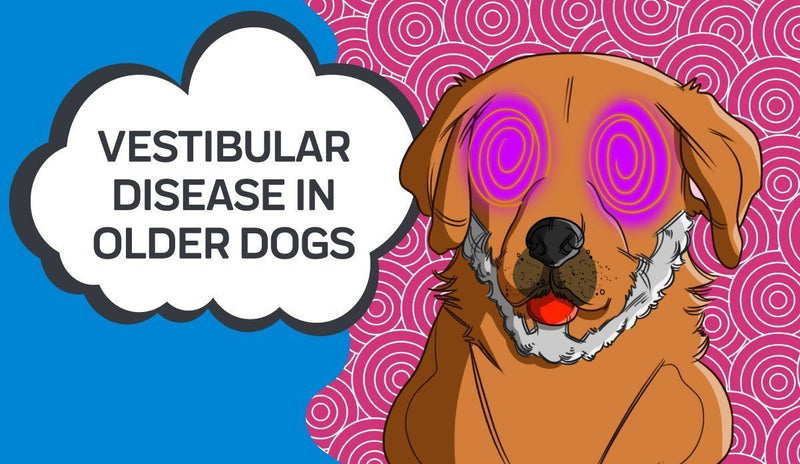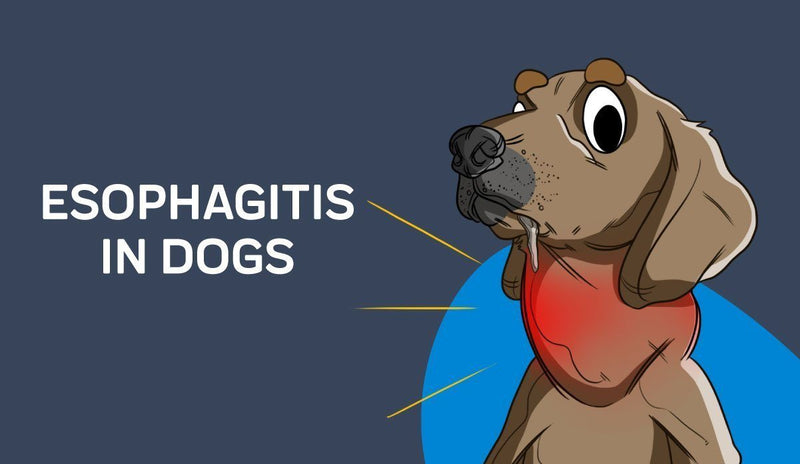 So, what is the difference between emotional support animal and service animal? Well, all of us are familiar with assistance dogs. You might’ve even seen one at the airport or in the grocery store. Perhaps you’ve mistakenly attempted to pet him only to be scolded by his owner. Your physician might’ve even suggested one for yourself.
So, what is the difference between emotional support animal and service animal? Well, all of us are familiar with assistance dogs. You might’ve even seen one at the airport or in the grocery store. Perhaps you’ve mistakenly attempted to pet him only to be scolded by his owner. Your physician might’ve even suggested one for yourself.
Let’s dive deeper into the difference between service dog and emotional support dog. For the ones who do not know, there are two kinds of working dogs: the first includes a medical assistance dog, (that is, seeing-eye dogs) that belong to a category of assistance animals referred to as service dogs. The second includes any type of therapy animal, dog or otherwise, typically called an emotional support animal. The line between service animals and additional working dogs recently has become blurred; therefore, here’s some clarification from Innovet Pet Products concerning the difference between a service animal and emotional support animal.
Service Animal: What is it?

Service animals are usually trained to do specific tasks which aren’t able to be done by the dog’s handler, according to the Americans with Disabilities Act (more on this covered below). This category carries the pedigree and realization that a canine has been uniquely trained to adhere to a strict set of tasks and guidelines.
While the Americans with Disabilities Act stipulates that a service animal has to be a dog that is trained to do a certain task, limited exceptions were made.
Here are some main differences between emotional support animals vs service animals:
Service Animal Vs. Emotional Support
So, what is the difference in emotional support animal vs service animal?
- Does a certain task versus offers overall emotional comfort
- Approved or trained by an Americans with Disabilities Act service versus no training needed
- Offered by an Americans with Disabilities Act approved source versus procured from any source
- Restricted to being a dog versus may be any kind of animal
- Has to be registered with Americans with Disabilities Act versus no registration needed
Service Animal Examples
Service animals traditionally fall into roles of aiding the ones who have severe mental or physical disabilities which prevent normal day-to-day function.
For instance, to one who has lost his sight, a seeing-eye canine is a service animal that acts as the eyes of a blind owner. The seeing-eye canine aids his owner as the two work together to move all throughout the world. The service dog, in other words, does the physical job that his owner does not have the ability to do by himself.
Emotional Support Animal: What is it?

Emotional support animals, sometimes called ‘therapy dogs,’ are any animals that provide psychological comfort to an owner. For a canine to be claimed as an emotional support animal, there has to be medical paperwork.
Unlike service animals, ESAs aren’t limited to being dogs. Some of the more non-traditional ones include monkeys, reptiles, and birds.
What are some of the functions that they offer?
There are some major emotional conditions which need the use of an emotional support animal. More commonly, an emotional support animal is prescribed to the ones who suffer with past trauma such as PTSD or assault.
Emotional support animals and therapy dogs also are a solution for the ones suffering with serious social anxiety due to emotional or mental disability. In all instances, the emotional support animal’s role is to comfort and assist an owner.
ESA: How to Obtain One
In order to have your animal registered as an emotional support animal, you have to be provided a formal letter by a licensed mental health expert. While there’s an emotional support animal registry, just the letter is required to get the rights of obtaining an emotional support animal.
Fair Housing Act and ESAs (Emotional Support Animals)
An ESA (emotional support animal) is as it sounds —a pet which offers emotional support. Beyond the usual training an animal needs, these animals do not require any specialized training. Cats and dogs are the most common, yet any domesticated pet may be an emotional support animal.
Emotional support animals are covered underneath the Fair Housing Act (more on this below). It permits people who have an emotional support animal to have their animal in their house even if there’s a "no pet" policy. In addition, the law prevents extra pet fees for emotional support animals. Small emotional support animals also can travel along with you on the plane for free.
To receive the benefits of an emotional support animal, you’ll require a “prescription” from a mental health expert. Basically, this is merely a signed letter that states that you have a mental health ailment and that your animal helps you handle it. Some airlines and landlords will accept a letter from a medical physician, but typically it has to be a psychiatrist or therapist.
Emotional support animals are not permitted into public places which do not usually permit pets. For this, you would require a service animal.
Fair Housing Act
The FHA (Fair Housing Act) is a federal law which prevents discrimination against tenants inside their houses.
Under the Fair Housing Act, a disability can be defined as a mental or physical impairment that substantially limits an individual’s major life activities. Even if the lease states “restricted pets” or "no pets" landlords must make what’s referred to as a “reasonable accommodation” that allows pets serving as assistance animals, including animals who offer emotional support.
Assistance animals are within a different legal category than pets that aren’t assistance animals, which is the reason why pet fees and restrictions are waived for them. They’re animals that work, perform and/or assist with services and tasks for the benefit of one who has a disability or offer emotional support which improves a disability’s symptoms.
There isn’t any official training or certification for assistance animals, and they may assist in various ways. Weight and breed restrictions don’t apply to service or assistance animals.
If a landlord refuses to accommodate
A landlord has to agree to a request for reasonable accommodation if a disability claim is true and if that request doesn’t create a hardship upon the landlord or additional tenants. If the reasonable accommodation request is denied by a landlord, you have the right to ask that a government agency investigate the claim that the landlord is actually discriminating against you.
You possess multiple options for filing the complaint:
- It’s possible to file a discrimination complaint electronically with HUD (Department of Housing & Urban Development). Details about this process is located on HUD’s website.
- It’s possible to print and fill out a Department of Housing and Urban Development Discrimination Form then mail it to the suitable HUD office.
- Most states offer a government agency which investigates claims of discrimination. You also can directly file a complaint with your state’s agency.
Service Animal: How to Get One
Firstly, a medical requirement has to be identified and set up by a medical expert. As a diagnosis is reached, confirming the necessity for a service animal, the disabled individual can procure a service dog. A service dog may come from an Americans with Disabilities Act approved source, or the owner’s current dog can be trained then approved by the Americans with Disabilities Act.
Some assistance animal examples include:
- Cats who are able to detect and alert their companion of an oncoming seizure.
- Dogs who alleviate a person’s anxiety or depression.
- Cats who reduce an individual’s stress-induced pain.
- Birds who alert their hard-of-hearing owner as someone comes to the door.
Where Is My Emotional Support Animal and/or Service Dog Permitted to Go?
Under the ADA guidelines, service dogs are permitted inside any environment in which the general public might be allowed. That means a registered service canine can’t be denied entrance inside any public space under United States law.
Emotional support animals don’t possess the same rights as they aren’t within the same category. An ESA might be taken into public areas, yet any privately-owned business is permitted to set their own regulations about if ESAs are welcomed.
Service Animal Vs Emotional Support: What is the Main Difference?
So, what is the difference between service animal and emotional support animal? The main differences between an emotional support animal and a service animal are the legal rights of the animal, as well as the responsibilities of the animal itself. While service animals provide a certain physical service to the disabled owner, the emotional support animal is a prescribed companion that is used for overall emotional support.
Emotional support dogs and service animals are a testament as to why we call our furry companions ‘man’s best friend,’ and hopefully, this post has provided you better insight into the differences between the two various types of assistance canines: the service animals vs emotional support animals.
Americans with Disabilities Act on Service Dogs
The DOJ (Department of Justice) published revised final regulations that implement the ADA (Americans with Disabilities Act) for title II (Local and state government services) and title III (commercial facilities and public accommodations) on Sept. 15th, 2010, in the Federal Register. Those rules, or requirements, refine and clarify issues which have arisen over the last two decades and contain updated, and new requirements, which includes the 2010 Standards for Accessible Design.
Overview
The publication offers guidance on the word “service animal” and service animal provisions within the DOJ’s new rules.
- Starting on March 15th, 2011, only canines are recognized as service animals under the ADA titles II and III.
- Service animals include dogs individually trained to do work or tasks for an individual who has a disability.
- Title II and title III entities generally have to allow service animals to accompany folks who have disabilities in all places in which members of the general public are permitted to go.
How is “Service Animal” Defined?
Service animals can be defined as canines which are individually trained to perform work or do tasks for folks who have disabilities. Instances of this type of tasks or work includes guiding individuals who are blind, pulling a wheelchair, alerting those who are deaf, protecting and alerting someone who’s experiencing a seizure, reminding someone who has mental illness to ingest prescribed meds, calming someone who has PTSD during his/her anxiety attack, or doing other tasks. A service animal is a working animal, and not a pet. The task or work a dog was trained to provide has to be directly associated with the individual’s disability. Dogs whose only function includes providing emotional support or comfort don’t qualify as service animals under the Americans with Disabilities Act.
The definition doesn’t limit or affect the broader “assistance animal” definition underneath the Fair Housing Act or broader “service animal” definition underneath the Air Carrier Access Act.
Also, some local and state laws define service animal more widely than the Americans with Disabilities Act does. Information on these types of laws may be obtained from the office of the state attorney general.
Service Animals: Where Are They Allowed?
Businesses, local, as well as state governments, as well as nonprofit organizations serving the public usually must permit service animals to accompany those who have disabilities in all spaces of the facility in which the public is usually allowed to go, under the Americans with Disabilities Act. For instance, inside a hospital it wouldn’t be appropriate to exclude a service animal from places like clinics, patient rooms, exam rooms, or cafeterias. But it might be suitable to exclude a service animal from burn units or operating rooms in which the presence of the animal might compromise the sterile environment.
Service Animals Have to Remain Under Control
Service animals have to be leashed, harnessed, or tethered, unless those devices interfere with a service animal’s work or the person’s disability prevents the use of those devices, under the Americans with Disabilities Act. In that instance, the owner has to keep control of the animal through signal, voice, or other efficient controls.
Charges, Exclusions, Inquiries and Other Certain Rules Associated with Service Animals

- As it isn’t obvious what service a dog offers, only limited inquiries are permitted. Staff might ask these two questions: (1) is the canine a service animal needed due to a disability, and (2) what task or work has the canine been trained to do. Staff can’t ask about the individual’s disability, require medical paperwork, require a certain ID card or training paperwork for the animal, or ask that the animal demonstrate its capability of performing the task or work.
- Fear of dogs and allergies aren’t valid reasons for denying accessibility or refusing service to folks using service animals. As an individual who’s allergic to pet dander and an individual who uses a service animal has to spend time in the same facility or room, for instance, at a homeless shelter or in a school classroom, they both ought to be accommodated by assigning them, if you can to various locations inside the room or various rooms inside the facility.
- An individual who has a disability can’t be asked to take away his service animal from the premises unless: (1) the canine is out of control and the owner doesn’t take efficient action to control it or (2) the canine isn’t housebroken. As there’s a legit reason to ask that a service dog be removed, the staff has to provide the individual who has the disability the chance to obtain services or goods without the dog’s presence.
- Establishments that prepare or sell food has to permit service dogs in public spaces even if local or state health codes prohibit dogs on the premises.
- People who have disabilities who utilize service animals can’t be isolated from additional patrons, treated less favorably than others, or charged fees which aren’t charged to additional patrons who don’t have animals. Additionally, if a business needs a fee or deposit to be paid by patrons who have pets, it has to waive the charge for service dogs.
- If an establishment like a hotel usually charges visitors for damage that they cause, a patron who has a disability also may be charged for damage that is caused by himself or the service animal.
- Staff aren’t required to offer food or care for the service animal.
Miniature Horses
Besides the provisions about service dogs, the DOJs revised Americans with Disabilities Act regulations have a separate, new provision regarding miniature horses which have been individually trained to perform work or do tasks for those who have disabilities. (Generally, miniature horse’s range in height from 24” – 34” measured to the shoulders and typically weigh from 70 to 100 lbs.) Entities covered by the act have to change their policies to allow miniature horses where it is reasonable. The regulations established four evaluation factors to help entities in determining if miniature horses may be accommodated inside their facility. The evaluation factors include (1) whether a miniature horse is housebroken; (2) whether a miniature horse is under the handler’s control; (3) whether a facility may accommodate the miniature horse’s weight, size, and type; and (4) whether the horse’s presence won’t compromise legit safety requirements needed for safe operation of a facility.
Sources:
Service Animals and Emotional Support AnimalsESA vs Service Dogs
Everything You Need to Know About Emotional Support Animals
Service Dogs, Working Dogs, Therapy Dogs, Emotional Support Dogs
What is the Difference Between an Emotional Support Animal, Therapy Dog and Service Dog
















